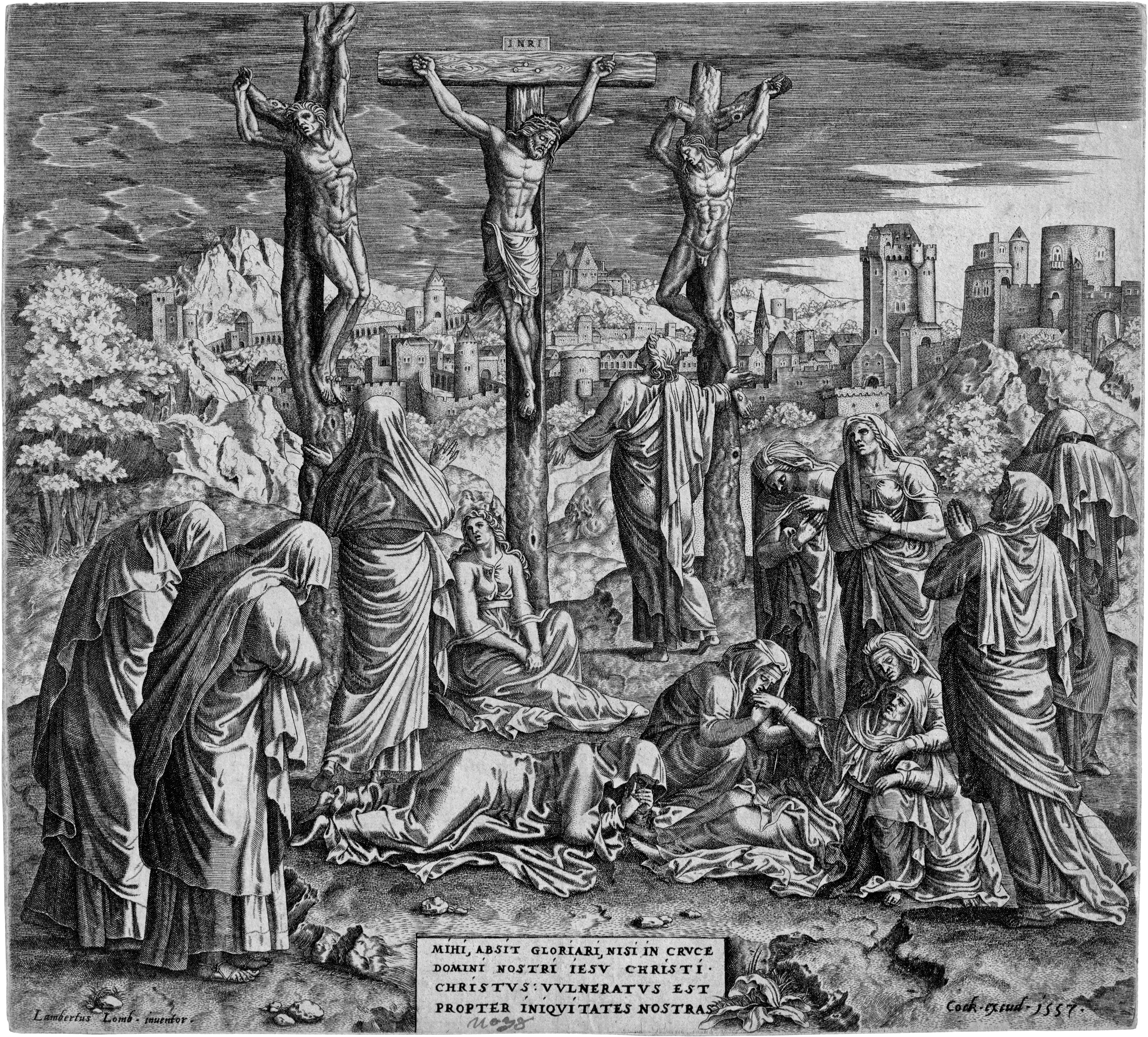Loading the page ...
Pieter van der Heyden
(circa 1530 – circa 1572, Antwerp)
The Crucifixion. Engraving. 25.4 x 27.8 cm. 1557. Hollstein 11.
Pieter van der Heyden was one of the most prolific reproductive engravers to be employed by the Antwerp publisher, Hieronymus Cock. He was a member of the Antwerp guild from 1557, the year the present work arose, and between 1551 and 1572 received commissions from Cock and his widow, Volcxken Diericx. The artist was also known as Petrus a Merica, the monogram comprising the capital letters PAME being based on the Latinised form of his name. Van der Heyden was a typical reproductive engraver who kept strictly to the original designs. Among his outstanding achievements are the numerous reproductive engravings he made after works by Hieronymus Bosch and Pieter Brueghel, which played a big part in the economic upturn of Cock’s publishing house, Aux Quatre Vents.
The present very rare sheet dates to the early years of the publishing house, which was founded in 1550. Shortly afterwards Cock became the first publisher in the Netherlands to concentrate on reproductive engravings after Italian masters such as Michelangelo, Raphael, Giulio Romano and Andrea del Sarto. To this end he also employed the famous Mantuan engraver, Giorgio Ghisi, who produced five large-format engravings for the publishing house between 1550 and 1555. Cock thus made a significant contribution to the dissemination of Italian Renaissance forms and designs in Flanders. The Crucifixion, which is based on a design by the Flemish Romanist, Lambertus Lombard, is remarkable for its emotional atmosphere and dense composition. Lombard was fond of placing repoussoir figures seen from behind in the foreground as they give the composition additional depth. The veiled, grieving female figures heighten the dramatic nature of the scene and in typological terms are reminiscent of the pleurants to be found in 15th century Burgundy sculpture. Van der Heyden has reproduced Lombard’s model using a painstaking, intricate engraving technique which is noteworthy for its delicacy and atmospheric intensity. The evocative mediaeval buildings and fortifications in the background are rendered very effectively.
Van der Heyden later came to be known primarily for his reproductive engravings after Hieronymus Bosch and Pieter Brueghel, but this work still very much radiates the spirit of the Renaissance in Northern Europe. A very fine impression with thread margins around the platemark. Minor ageing, otherwise in excellent condition.
Contact us for further information